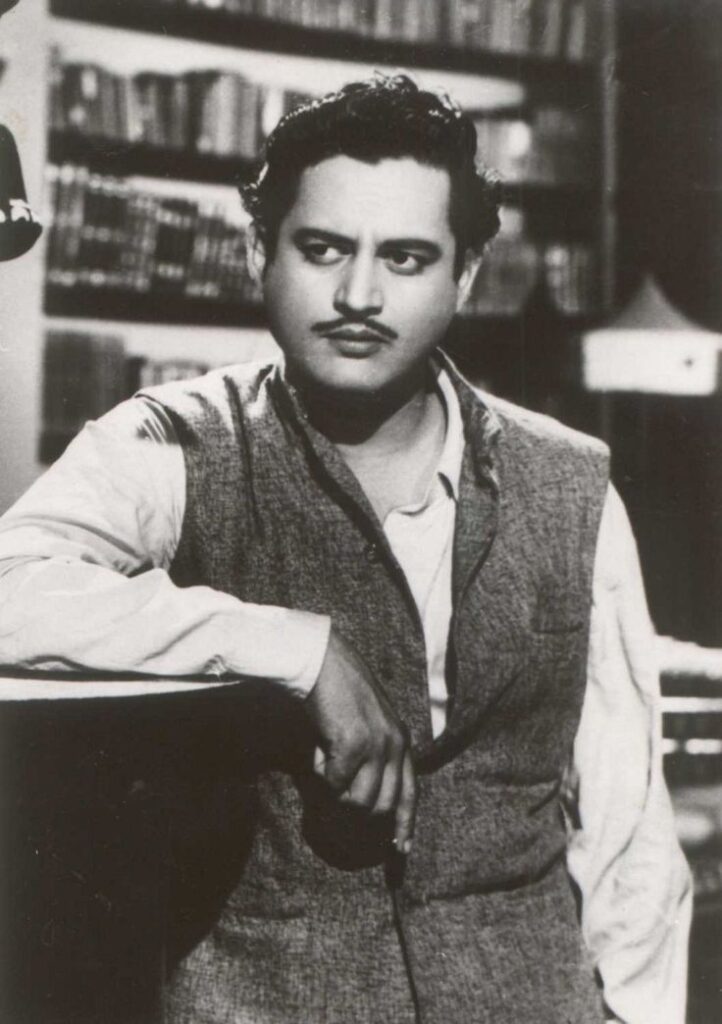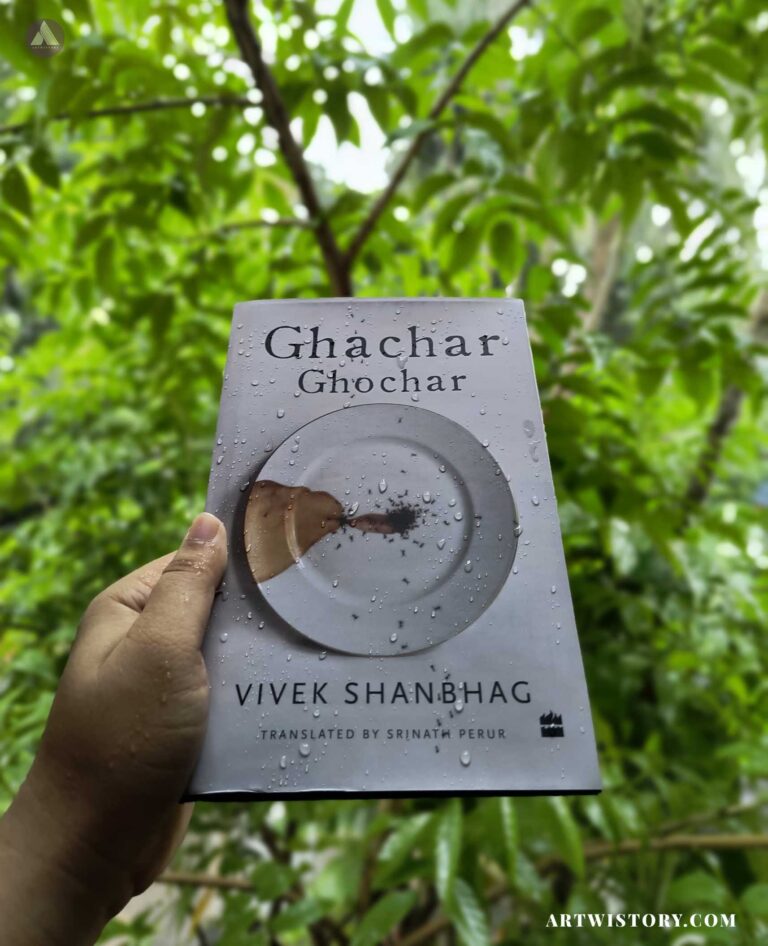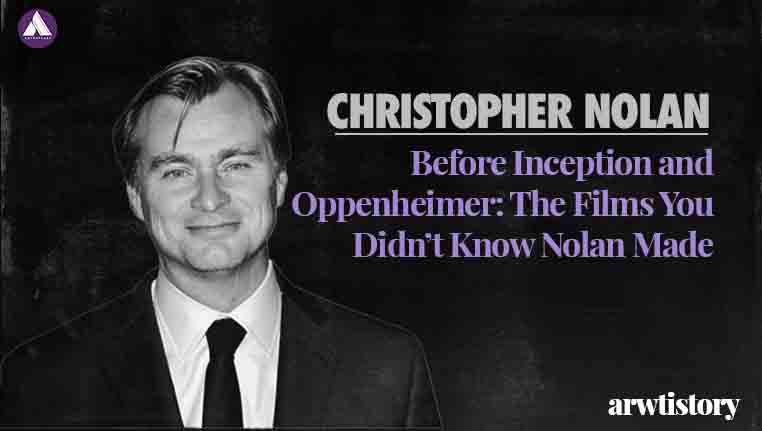A Childhood Shaped by Doordarshan
I do not consider myself as Gen Z. It might be because I have grown up watching Doordarshan. Why am I saying this? During my childhood, like every Indian parent, my parents too thought that TV was ruining their talented child. And it might be true, I used to watch movies and cartoons for long hours and didn’t care much about my studies. With that concern, my cable TV connection was cut off. I cried for days. Just to cover the news and information and to accompany my lonely, so-called electronic box, my mother brought an antenna from the Prangon Market in Murshidabad (where you could find very peculiar yet useful tech products).
The feature of that antenna was that it only broadcasted two channels, one was DD National and the other DD News. After 3 PM, suddenly on the DD National channel, it changed to DD Bangla. It may seem strange, but yes, that was something at that time — and it cost nothing. So because we didn’t have any choice, I used to watch that only. My friends used to talk about WWE matches, sports like football and badminton, and I used to feel left out in all those conversations. But what could I do? I didn’t have any option. So, we made those two channels our lifeline.
Monochrome Memories: Sundays with Classics
Recalling those memories, I always picture them in black and white. My sister and I used to wait for Sundays to watch Sunday Matinee shows at 12 PM. In that slot, they programmed old classic movies. So, the only escape for our entertainment was 1950s–1970s films that were screened every Sunday. At that time, I started loving actors like Dev Anand, Rajesh Khanna, Raj Kapoor and more. And one day I watched Pyaasa. The feeling we had every Sunday cannot be described, it felt heavenly to find that escape. We used to have our lunch and had a wholesome Sunday. When I first watched Pyaasa, I was almost about to miss it for some reason. But maybe it was nature’s plan — I watched it. Even at that time, it hit me differently.
Rediscovering Guru Dutt in Lockdown
Eventually, I forgot about it and went on with my life. During my graduation, when I had my first smart phone, I started watching films and then COVID arrived. During COVID, almost everyone watched tons of cinema and shows. And so did I. For some reason, I used to watch one old Hindi classic every week which was permanent between my watctchlist among various World Cinema, and one of those weeks, I watched Pyaasa. And again, it led me into deep thoughts. I thought of watching Guru Dutt’s other films like Kaagaz Ke Phool, Sahib Biwi Aur Ghulam, and Mr. & Mrs. 55. And somewhere or other, it made me think. Every time I went back to those films, I rediscovered something in those frames. I started reading books on him, articles on him, and watched tons of interviews.
Everyone who knows me says how obsessive I am about him. Well, that’s not true. I am obsessed about many such directors, but Guru Dutt hits me differently every time.
It might be that I am too attracted to the melancholy that he portrayed or the ‘gām’ (sadness) that he kept showing in his films.
A few years ago, I met a girl online. We had good conversations. We talked a lot about books, art, and films. Eventually, one day she said, “I don’t like Hindi old classical music.” I have always been fine with everyone’s opinions and have always tried to respect them. I asked her why she didn’t like these old retro songs. She replied, “They are too cliched, as each and every song talks about love and love.” So I asked again, “What should they talk about then?” She said, “There are so many things, like tragedy, problems of the nation, the working class, or the problems of the middle class.” I texted “true” and smiled.
I never texted her back again and eventually lost contact with her. But the smiling face of mine at that time was shouting — GURU DUTT!!! Have you heard the songs of Pyaasa, Kaagaz Ke Phool?
Old Hindi Songs Aren’t Just About Love
While I know these are not the only two films that talked about national tragedies or disillusionment — there were many. Like “Aurat Ne Janam Diya Mardon Ko” – Sadhna (1958), “Ek Din Bik Jayega Maati Ke Mol” – Dharam Karam (1975), “Kahin Door Jab Din Dhal Jaaye” – Anand (1971), “Zindagi Kya Hai Batayein” – Chhoti Si Baat (1976), and so many. Songs like “Kaaton Se Kheench Ke Yeh Aanchal” – Guide (1965) worked as a symbol of rebellion against societal expectations, or the songs of Do Bigha Zameen. But the songs of Pyaasa were different.
One of the distinguishing features about Guru Dutt was that he never used his songs as an extension of entertainment. Instead, he used them as dialogue or a method of storytelling. So he preferred not to have a prelude or music before his songs, they started straight with the lyrical part. It is pretty evident in his films. His songs were much more than just expressions of love. One of the biggest reasons was his songwriters like Sahir Ludhianvi and Kaifi Azmi, who were communist poets and wrote about class struggles, working classes, state discrimination, and national hypocrisy. And Guru Dutt aligned with those ideologies.
Poetic Resistance: Songs as Dialogue
In his film Pyaasa, there is a dialogue where Vijay goes to the publisher to ask whether his poetry will be published. The publisher says, “You call this poetry? It is a crusade against hunger and unemployment. Sir, poetry deals with delicacies. Write poems about flowers and songbirds, write about wine and carafes. Have you read poets like Mir and Momin?” Vijay smiles and replies, “Yes, I’ve heard about Mir and Momin. And I’ve also read Josh and Faiz too, which is beyond your comprehension.” Josh and Faiz were known for their existentialist writings and social critique.
One interesting fact about the song in C.I.D., “Jaata Kahan Hai Deewane”, which was picturized on the vamp played by Waheeda Rehman, it was not approved by the Censor Board. They objected to a C.I.D. officer being seduced by a vamp and particularly took issue with the word “fifi,” which sounded suggestive to them. Waheeda Rehman, in an interview, addressed that the problem wasn’t with the word “fifi” but with the line “Jaata kahan hai deewane, sab kuch yahan hai sanam,” which the Censor Board found suggestive.
Anurag Kashyap, who is a big follower and admirer of Guru Dutt, also used this song in his film Bombay Velvet, starring Anushka Sharma.
I will be sharing more facts, interpretations of the songs, and their visualization on this website, including songs from films like Pyaasa and Kaagaz Ke Phool, so stay tuned for that.
More Than Entertainment: Songs as Cinematic Language
I have always had my share of debate where I have questioned whether an artist can recreate something linked to their own life. While this is a broader spectrum of argumentation, for Guru Dutt, it is pretty clear to me. After watching his films, I always thought, how can a man portray such tragedy in his storytelling? Which I later traced to his own life. I remember a paragraph from the book Guru Dutt: An Unfinished Story, where his sister Lalitha Lajmi talks about his death sequence.
“On the side table was a glass filled with a pink liquid – sleeping pills crushed and dissolved in water. There was an unfinished Hindi novel by his side and the lights were on. It looked like a thought-out scene straight out of one of his films. He had woven many spells through the poetic glances of his camera, the rhythm in his song sequences, and the rebellion in his cinematic language. This was Guru Dutt’s last spell. An unusual frame composition for his real death sequence.”
Abrar Alvi has also repeatedly mentioned how he and Guru Dutt used to plan a sequence where they imagined a suicide scene using sleeping pills, which ultimately played out in reality.

His films showed that existential crisis the nation was going through. I have recently written a whole dissertation on whether he was the only one showing dissent against contemporary society and the government. I have tried to prove that — hope someday I’ll be able to share that with you all. Right now, I’m not supposed to.
Songs like “Jinhein Naaz Hai Hind Par Woh Kahaan Hain” (“Where are those who were proud of the nation?”) directly show that dissent. I love the visualization of the song “Waqt Ne Kiya Kya Haseen Sitam.” It was the collaboration between two legends, V.K. Murthy and Guru Dutt, that made this visual storytelling possible.
In one of his interviews, V.K. Murthy talks about the scene:
“In that song ‘Waqt Ne Kiya, Kya Haseen Sitam,’ Guru Dutt and Waheeda Rehman are seen alone on the empty studio floor. I used a beam from the exhaust fan. The floor was empty — there was just one bullock cart lying there, that’s all. It was a property — there was nothing else. I used the bounce light system in that song. I bounced sunlight off a mirror outside, then off another mirror on the gallery on the second floor. Then it entered as a strong highlight onto the floor… Guru Dutt liked it immensely and you can see that he used this throughout the film.”
In the same interview, he again mentions how Guru Dutt was different from other directors. He knew exactly what he was doing, not like others who depended on the cameraman to do the work. He was very particular about his vision. He used a lot of close-ups, and those weren’t static, they kept moving. No one dared to do that.
He keeps saying throughout the interview that it was because of both of them that all this was made possible, whether it was using fog in Pyaasa, on-location shooting near the Ganges in Kolkata, or experimenting with new ideas.
“Once, for Pyaasa, we even shot in real rain in Calcutta. My camera was in the car and Guru Dutt was outside in the rain. He started running in the real Calcutta rain. I did it. I asked Guru Dutt, ‘Do you want me to do it?’ and he said, ‘Yeh karenge yaar’ (Let’s do it). So you see, it’s a combination of director, actor, artist, cameraman. Between Guru Dutt and me, this was possible.”
The whole interview is too good and informational, a must-read for anyone enthusiastic about filmmaking processes or behind-the-scenes hustle. You may read the whole interview by clicking here.
Frames of Isolation: The Cinematic Language of Kaagaz Ke Phool
Guru Dutt Productions Studio was demolished when the highway (Ali Yavar Jang Road) was built. The last scene in Kaagaz Ke Phool was similar to his own death. That’s why I still consider the last frame of Kaagaz Ke Phool as his own death sequence.
I am romanticizing his filmmaking techniques, his life, and everything in this writing , but that’s what he did. As Arun Khopkar said in his book Guru Dutt: A Tragedy in Three Acts, Guru Dutt and Ritwik Ghatak seem so similar to him in terms of romanticization, melodrama, and use of songs. Ghatak used those techniques to show partition; Dutt used them to show tragedy.

Kaagaz Ke Phool was shot in CinemaScope just to portray the tragedy or melancholy. In the film, Suresh is often placed at the far edge of the frame, cut off from others even when he is in the same room. In a scene, Suresh is shot from a low angle with the palace in the background to depict him in a higher position, isolating himself. Another example is the studio entrance scene where Suresh walks in alone, his figure swallowed by the massive set. So, CinemaScope was not just an aesthetic choice, it became a narrative device and a bold technical decision at a time when Hindi cinema was still accustomed to the 4:3 ratio. But unlike Hollywood’s use of widescreen for grand landscapes or spectacle (like in Ben-Hur), Dutt subverted it. He used grandeur to isolate the character within the frame. As Arun Khopkar says:
“Guru Dutt’s visual spaces are haunted by absences — of love, of memory, of belonging. The emptiness is not aesthetic — it is political.”
This article is stretching the word boundaries I had planned. There’s so much to say, and compressing it into limited words is impossible. So I will be sharing more about him and his films all over the week and month. It will be more informational than personal.
I have nothing to give him on his 100th birthday, only words to dedicate.
I wish I could offer him flowers, but even that feels futile. What can we offer to someone who gave us Kaagaz Ke Phool and Pyaasa? All I hold are paper petals — fragile and fading, much like the dreams he captured on screen. His films were not made to entertain or to adorn. They were made to listen to silence, stare into emptiness, and light up the shadows, much like this ironic nation he kept talking about in his films. He made me feel silence, emptiness, and melancholy. But, I have no grand tribute to offer, just these fragile words.



